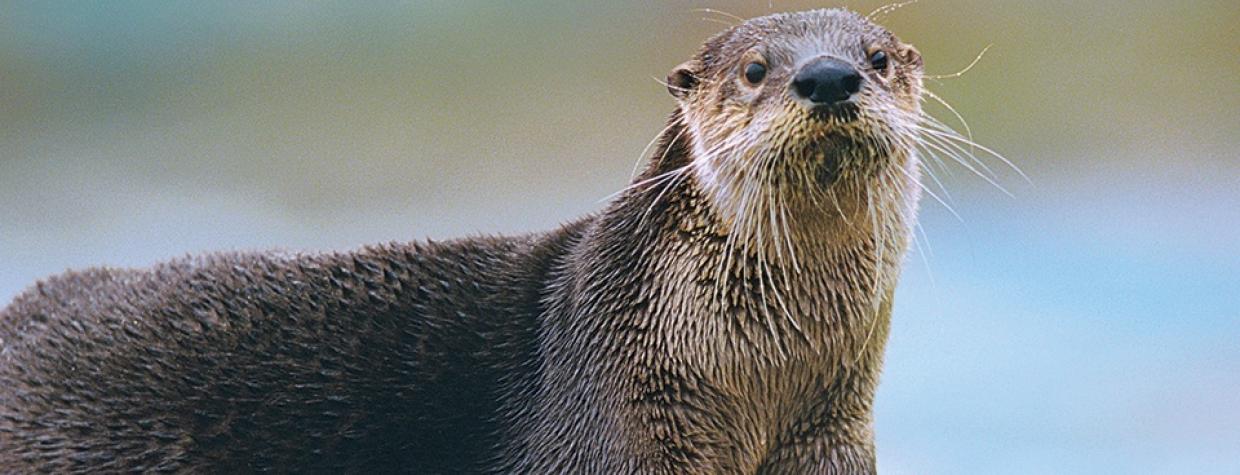Otters are about as intimidating as bears — teddy bears, gummy bears, Cal Bears. They're relatively nonthreatening, in part because of their chocolatey-brown fur, webbed feet, amber eyes and playful personalities.
Measuring just over 3 feet and weighing 12 to 20 pounds, these semiaquatic furry mammals are known for their expert swimming skills and their ability to stay fully submerged for up to eight minutes, swimming, diving and hunting. Their swimming skills can be attributed to their elongated bodies, which have streamlined tails that taper from a thick base to a pointed tip, as well as a flattened head and small ears.
Though small, those ears do come in handy while scouting prey. In most parts of the country, otters hunt at night, sometimes covering several miles in one expedition. They like to dig under logs and scavenge through the mud in search of midnight snacks, usually fish, shellfish, mice and small birds. And it takes a lot of fuel to feed the energetic swimmers — river otters consume approximately 15 to 20 percent of their body weight each day.
When they're not busy eating, otters spend a lot of time playing. They're known for their quirky, comedic behaviors, splashing each other and darting in and out of the water. Chalk the playfulness up to their fast metabolisms — thus the hearty appetites — and their instinct to strengthen social bonds.
Otters like to play around when it comes to mating, too. Unlike similar creatures, otters aren't monogamous and don't mate for life. During mating season, male otters typically breed with several females. Babies are born in litters of one to six between November and May, with a baby boom in March and April. After approximately six months of living with their mothers, the otters will venture out on their own.
Sometimes, that's a dangerous endeavor. Coyotes, raptors and other large predators often target young otters because of their small size. But even at that age, an otter's stellar swimming skills come in handy. There's not much they can do, however, to defend against encroachment.
Once abundant in the Salt, Verde, Gila and Colorado river systems, otters were displaced by early settlers in Arizona. Fortunately, for otters and wildlife enthusiasts, biologists reintroduced the species to the Verde River in the 1980s, and today, otters are swimming freely throughout the entire watershed.

